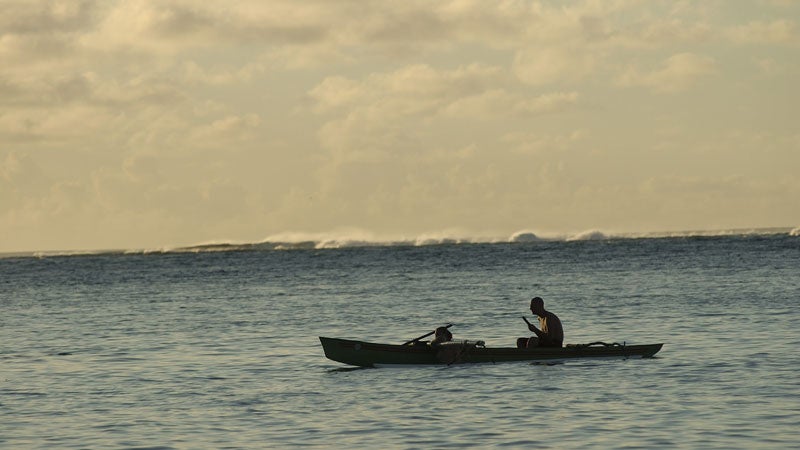If rowing across the Pacific Ocean with your significant other doesn’t sound tough enough, how about doing it without any energy gels, granola bars, or sports drinks?
Fueling a massive endurance effort with almost no sugar or carbs isn’t the most traditional route for athletes, but Sami Inkinen and Meredith Loring want to prove that it can work. This June, the married duo plans to go from San Francisco to Honolulu as part of the inaugural —and to see that through on a diet of fat and protein. (Inkinen and Loring believe sugar and processed carbohydrates only hinder athletes.)
This unconventional approach is reminiscent of the increasingly popular paleo and low-carb diets, which have been embraced by CrossFit addicts, dieters, and triathletes alike. Whether the low-carb craze is the best approach for active individuals (let alone endurance athletes) remains controversial. Some nutritionists have embraced the high-protein, high-fat approach, asserting that it reduces inflammation, stabilizes blood sugar, and eliminates the need to eat regularly during distance exercise. But other scientists say our bodies need carbohydrates during exercise to avoid muscle depletion, to keep metabolism functioning properly, and to achieve optimal performance.
“Carbs are like super-high octane fuel for athletes,” says Matt Fitzgerald, author of , as well as the upcoming book Diet Cults. “The best endurance athletes in the world—runners in East Africa—eat a very high carbohydrate diet.”
The dissenting opinions carry over to Inkinen and Loring’s planned ocean crossing. Stephen Phinney, the pair’s nutritional advisor and a physician-scientist who wrote , has become an advocate for the low-carb approach for endurance athletes, explaining that the diet reduces inflammation and muscle soreness. Phinney believes Inkinen and Loring will have no trouble fueling their long-distance row with a diet that contains just 10 percent carbohydrates—and that they’ll be able to avoid energy swings and experience faster recovery rates.
“If Sami and Meredith were racing in a five-kilometer event, a well-formulated ketogenic diet might not be the best strategy,” Phinney says, referring to a high-fat, low-carb diet. “But they’re going to be rowing 12 to 14 hours a day, for 45 to 60 days, at relatively low intensity.”
Other sports scientists, however, state they’d never recommend a low-carb approach during an endurance competition, even if the athletes are exerting at a steady rate. Michael Joyner, a physiologist at the Mayo Clinic, says most top distance athletes consume carbs when they’re racing because that’s what improves performance. Carbohydrates boost the central nervous system, keep metabolic pathways working, and provide energy, Joyner explains. Fitzgerald also advocates carb consumption for athletic competition, adding that such food offers a superior energy source during exercise stress.
Despite the controversy over the low-carb approach for exercise, Inkinen and Loring are certain the fat-and-protein diet they’re signing on for is the one that will best serve them for the 2,400-mile ocean crossing. They plan to race 14 other boats, singles, pairs, and fours among them. Along with safely completing the crossing, the couple hopes to set a record for the fastest Pacific Ocean crossing for a pair.
The ocean menu will include nuts, coconut butter, salmon, dehydrated vegetables, lard, macadamia nuts, and, as a treat, unsweetened dark chocolate. They won’t consume any caffeine because they believe it will hinder sleep during the two-hour breaks. Per day, Inkinen will consume about 9,000 calories, and Loring will total about 5,000—so they’ll carry about a million calories’ worth of food in the boat.
“We see this adventure as a way to prove that you not don’t need sugar in real life, but you also don’t need it in exercise,” Loring says.
Loring first adopted a low-carb, low-sugar diet in 2004, with Inkinen following suit a year and a half ago. Inkinen believes the dietary change made him less prone to illness and improved his performance in distance triathlons. Both say they don’t need frequent snacks during exercise because they’ve trained their bodies to run on fat stores—and that, as a result, they feel better while racing.
“We don’t have sugar crashes, so we don’t have to eat as often,” says Inkinen. “We no longer have to rely on gels every 30 minutes.”
.


